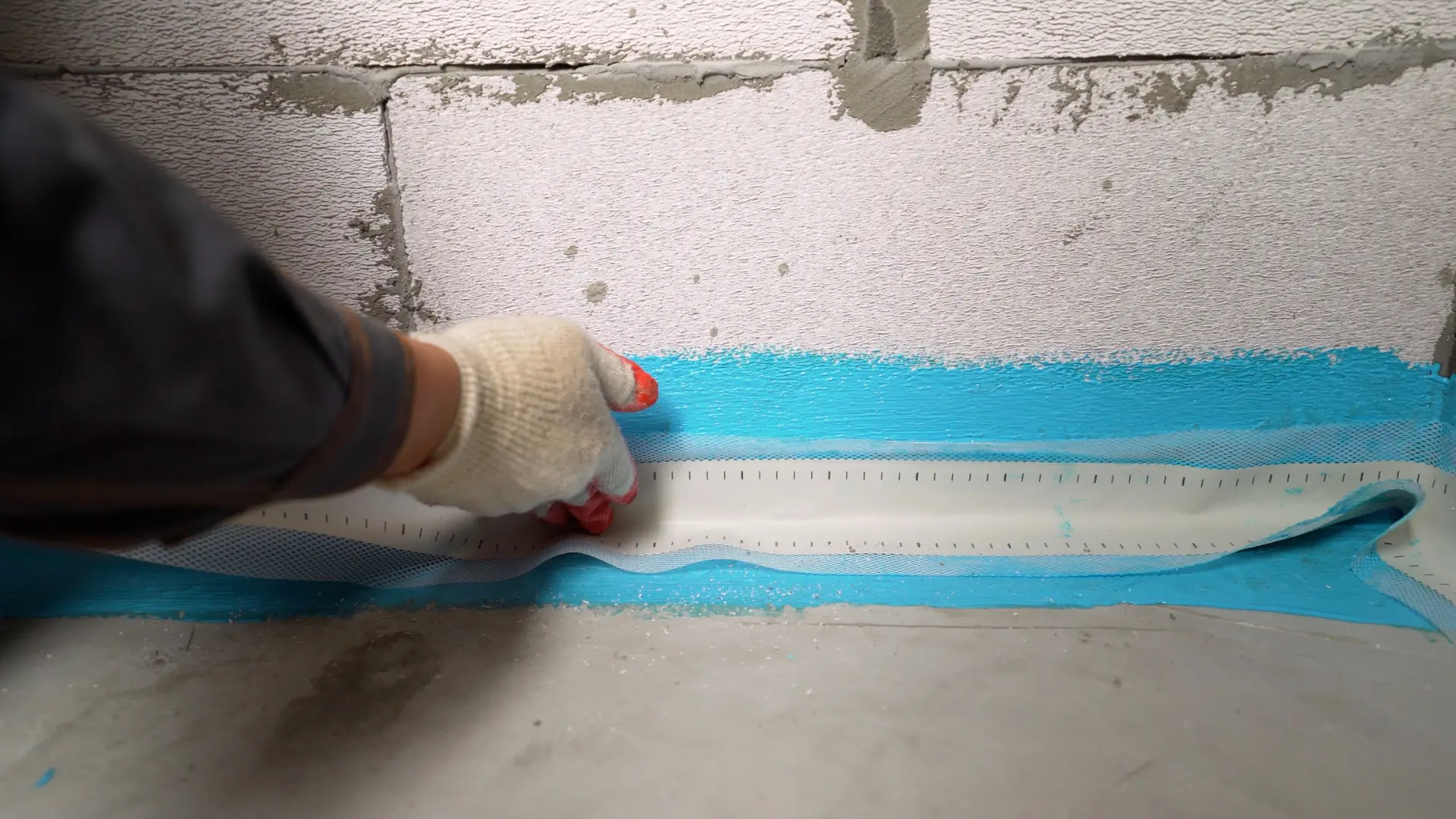When water starts troubling your basement, homeowners often face a key question: Do I need exterior waterproofing or interior waterproofing? Each method has its strengths and tradeoffs. The right choice depends on your home, budget, access, and how severe the water issue is.
At City Wide Group, we often guide homeowners through this decision. Below, we’ll walk through what each method does, where it shines, where it falls short, and how to choose — plus a side-by-side comparison to help you decide.
What Do We Mean by “Exterior” and “Interior” Waterproofing?
- Exterior waterproofing: This refers to efforts done on the outside of your foundation — the goal is to stop water from ever getting into your basement.
- Interior waterproofing: This involves systems installed inside the basement to manage and redirect water that has already entered (or might enter), preventing it from causing damage.
In simple terms: exterior tries to prevent; interior helps control what gets in.
How Exterior Waterproofing Works
When properly designed, an exterior waterproofing system addresses the root cause — groundwater and surface water — before it reaches your basement walls. Key elements include:
- Excavating soil around the foundation walls to expose concrete
- Applying a waterproof membrane or coating on the exterior walls
- Installing drainage membranes or boards to channel water away
- Placing or upgrading French drains or exterior drain tile systems
- Proper sloping (grading) of soil to direct runoff away from the foundation
- Ensuring gutters, downspouts, and downspout extensions move water away from the base
Because this method intervenes before water touches your foundation surface, it’s very effective in preventing leaks and damage.
Pros of Exterior Waterproofing
| Benefit | Explanation |
| Better protection | Water is blocked before it contacts the foundation walls |
| Less interior moisture stress | Walls stay drier, reducing risk of mould, dampness, and condensation |
| Stronger foundation health | Protects against long-term hydrostatic pressure damage |
| One-time solution (often) | Well-installed systems last many years with minimal intervention |
Limitations / Challenges
- Cost is typically higher (excavation, labour, materials)
- Requires space around the home for digging
- Landscaping, patios, driveways may need repair after the work
- Weather or site conditions can slow or complicate work
- In some homes, exterior access may be restricted
How Interior Waterproofing Works
Interior waterproofing doesn’t fight water before it strikes the foundation — instead, it captures, channels, and ejects water that makes its way inside or is pushing in. Common components:
- Interior perimeter drains or floor drains around the base of walls
- A sump pump (often in a pit) to pump water out
- Vapour barriers or sealants on walls and floors
- Crack injections or sealants to block known leaks
- Dehumidifiers to manage humidity levels
Essentially, interior systems manage the water that enters, making your basement safe and usable.
Pros of Interior Waterproofing
| Benefit | Explanation |
| Lower upfront cost | Requires less excavation and disruption |
| Minimal exterior disturbance | No digging outside in most cases |
| Usable during all seasons | Can be installed even when outdoor conditions are difficult |
| Good for finished basements | Less impact on interior finishes if walls are already done |
Limitations / Challenges
- It is reactive — water has to enter first before you control it
- More dependency on mechanical systems (e.g. sump pump)
- Requires maintenance (pump tests, drain cleaning)
- Doesn’t protect foundation exterior from water pressure
- May not fully solve severe leaks in high water table or poor drainage areas
Side-by-Side Comparison: Exterior vs Interior Waterproofing
| Feature | Exterior Waterproofing | Interior Waterproofing |
| Goal | Prevent water from reaching foundation | Capture and manage water that gets inside |
| Method | Exterior membrane, drainage, excavation | Interior drains, sump pumps, sealants |
| Disruption | High (digging, landscaping) | Moderate to low (inside basement) |
| Cost | Usually higher | Usually lower |
| Ongoing Maintenance | Lower (once installed) | Higher (pump checks, drain cleaning) |
| Effectiveness | Strong barrier, long-term solution | Effective for many cases, especially moderate moisture |
| Best used when … | Severe leaks, high water table, new build | Finished basements, limited exterior access, mild to moderate leaks |
| Limitations | Site constraints, cost | Doesn’t prevent water before it enters; reliance on pumps |
When to Use Exterior, Interior, or Both
In many homes, a combination of both systems offers the best protection. Here’s how to decide:
Use Exterior Waterproofing When:
- You’re experiencing serious foundation wall leaks
- You plan to rebuild or renovate landscaping
- The home has sufficient space around the foundation
- You want a more permanent, long-term solution
Use Interior Waterproofing When:
- Exterior excavation is impractical (property lines, buildings too close)
- The basement is already finished or furnished
- The water issue is moderate (dampness, minor seepage)
- You want a lower-cost, less invasive fix
Use Both When:
- Your property sits in a flood-prone or high groundwater area
- You want redundancy: block water outside, manage what slips in
- You’re investing in a long-term, comprehensive waterproofing strategy
Extra Depth: Real-World Scenarios & Considerations
Here are some factors to consider beyond just “which method.”
- Soil and Drainage Conditions
If the soil around your foundation doesn’t drain well (clay, heavy silt), exterior waterproofing becomes more critical. Water sitting against walls increases pressure over time. - Existing Landscaping & Hardscapes
If patios, decking, or mature gardens line your foundation, excavation might disrupt too much. Interior solutions may be safer in those cases. - Basement Usage & Finishes
Finished basements with drywall, built-ins, or flooring make exterior work expensive to tear apart. Interior systems are often less invasive. - Winter and Weather Constraints
Exterior waterproofing is weather-sensitive; freezing, heavy rain, or extreme cold may delay work. Interior options are more flexible. - Maintenance Commitment
Interior systems typically require periodic checks (sump pump function, clogging). Exterior systems, once installed well, often need less regular servicing. - Budget vs Return on Investment
Exterior work will cost more now but may save more later (fewer leaks, lower maintenance). Interior work may be more affordable initially but could have limitations over time. - Warranty & Guarantees
A high-quality basement waterproofing company will offer warranties, sometimes lifetime or transferable, especially for exterior systems. Always verify what’s included.
Sample Use Cases
- Old house with landscape constraints: Exterior excavation could destroy landscaping. Use interior systems with targeted crack repair.
- Home in flood-prone area: Exterior waterproofing plus interior drainage gives double protection.
- Home with finished basement: Start with interior methods to avoid tearing out finishes; if leaks persist, partial exterior work may follow.
- New build or major renovation: Exterior waterproofing is easier during foundation stage — ideal timing to include.
Tips for Choosing the Right System (for Your Home)
- Request a full site inspection — not a “guess from photos.”
- Ask for detailed quotes: scope, materials, warranty, timeline.
- Compare not just cost, but how long each solution will last.
- Read reviews and ask for past project photos (interior and exterior).
- Ask about maintenance requirements (pump checks, drain cleaning).
- Ensure the warranties are written and transferable.
- Consider staged implementation: sometimes interior first, exterior later if needed.
How City Wide Group Helps You Choose & Execute
At City Wide Group, we understand that each home is unique, and there is no “one size fits all” solution. When you reach out to us:
- We perform a detailed on-site assessment of basement walls, soil, drainage, and landscape
- We explain both interior and exterior waterproofing options — pros, cons, and what fits your home best
- We help you understand costs, warranties, and returns
- We execute the chosen solution with professional crews, proper materials, and quality control
- We interlink work (e.g. gutters, grading) so your waterproofing works seamlessly
If you’re in or around Toronto and you want peace of mind, check our basement waterproofing Toronto page for more details on local conditions and examples of our work.
Final Thoughts
Deciding between exterior and interior waterproofing isn’t a simple choice; it requires assessing site conditions, budget, access, and long-term goals. Exterior waterproofing offers proactive protection, but interior solutions often provide sensible, less invasive answers in many cases.
For many homes, combining both methods gives the best, most reliable defence against moisture. The key is having the right design and execution so systems complement each other, not conflict.
If you’d like help assessing which option works for your home (or a hybrid approach), reach out to our basement waterproofing company. We’ll walk you through your options and help you choose the solution that keeps your basement dry and your mind at ease.










